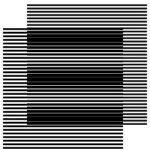Looking directly at the sun, especially during a solar eclipse, can cause serious and permanent eye damage. While the allure of this celestial event is undeniable, understanding the risks involved is crucial for protecting your vision.
The Danger of Direct Sunlight
The sun emits powerful ultraviolet (UV) radiation that can harm your skin and eyes. Just as prolonged exposure to sunlight can cause sunburn, staring at the sun can damage the delicate tissues of your eyes. This is why you instinctively squint or look away from bright sunlight.
Eclipse and the Illusion of Darkness
During a solar eclipse, the moon partially or completely blocks the sun, creating an illusion of darkness. This dimming tricks your eyes into dilating their pupils, allowing more light to enter. Normally, in bright sunlight, your pupils constrict and you blink more frequently to limit light exposure. However, during an eclipse, these natural defenses are lowered, making your eyes more vulnerable to damage.
Solar Retinopathy: A Silent Threat
Even when partially obscured during an eclipse, the sun’s intense light can flood your retina, the light-sensitive tissue at the back of your eye. This overexposure can damage or even destroy the cells that detect light, a condition called solar retinopathy.
Because the retina lacks pain receptors, you won’t feel any discomfort as the damage occurs. Symptoms of solar retinopathy, such as blurred vision, distorted shapes, and blind spots, may not appear until hours or even days later. In severe cases, the damage can be permanent, leading to partial or complete blindness.
Safe Viewing Methods
Fortunately, you can safely witness the wonder of a solar eclipse with proper precautions. The only safe way to look directly at the sun during an eclipse is through special-purpose solar filters, such as eclipse glasses or handheld solar viewers. These filters block harmful UV radiation and significantly reduce visible light, allowing you to observe the eclipse without risking eye damage.
Ordinary sunglasses, even very dark ones, do not offer sufficient protection. Welding glasses with a shade number of 14 or higher can also provide adequate protection.
Indirect Viewing Options
Another safe way to enjoy a solar eclipse is through indirect viewing methods. A pinhole projector, a simple device that projects an image of the sun onto a surface, allows you to observe the eclipse without looking directly at the sun. This is a fun and educational project for all ages.
Protecting Your Sight
Solar eclipses are rare and awe-inspiring events, but protecting your vision should be your top priority. Never look directly at the sun without proper eye protection. By following these safety guidelines, you can experience the beauty of a solar eclipse without risking your eyesight.

